Like the whoopie pie, the origin of the brownie is clouded in a mist of flour and cocoa powder, and it too has a strong Maine connection.
Pennsylvania and Maine both claim to have invented the whoopie pie. Every few years, the debate flares up, with Maine shoring up its case in 2011 through legislation that made it the state’s official treat.
The backstory of the brownie is even less clear, but the argument for Maine as its birthplace had a staunch proponent in one Mildred Brown Schrumpf, a Maine home economist so beloved that in 1970, the Maine Department of Agriculture named her the state’s Unofficial Ambassador of Good Eating.
The nickname she was better known by? “Brownie.”
Few other sweets are as identified with America as the brownie. Sonja Swanberg, a co-founder of Scratch Baking Co. in South Portland, describes the squares as “that iconic childhood thing,” and she cherishes her copy of her great-grandmother’s recipe.
Alison Pray of Standard Baking Co. in Portland says it’s one of the first baked goods she ever remembers eating. “At everybody’s home there was a pan of brownies around,” she said, “and it’s one of the first things you learn to bake.”
Thursday is National Brownie Day. When better to celebrate Maine’s connection with the confection and to thank it for helping to take our minds off of politics for five minutes? (Thursday, it turns out, is also National Pretend to Be a Time Traveler Day, which means it could serve double duty for people unhappy with the election results.)
MILDRED MAKES THE CASE FOR MAINE
Americans have been baking brownies since the late 19th-century, but here’s a surprise – early versions contained no chocolate at all. They were flavored with molasses. The first known recipe that called the brownie a brownie appeared in the 1896 edition of Fannie Farmer’s “Boston Cooking-School Cook Book.”
“The idea of a brownie was very appealing at the turn of the last century,” said Maine food historian Sandra Oliver. “They were little people, so any little thing was nicknamed a brownie.”
Just how the brownie as we know it today came into being is a topic of debate. One early version of the chocolate brownie was known as the Bangor Brownie because it was believed to have originated in Maine. A vague story claims a Bangor housewife invented the Bangor Brownie when a cake she was making for company fell because she forgot to add the baking soda.
The idea that Maine invented the brownie was promoted by Schrumpf, who died in 2001 at age 98 after a long career. Over some 70 years, she tested gas stoves, ran 4-H programs, taught home economics at the University of Maine and camp cookery for foresters through the extension service, and advocated for Maine food products. For 43 years, she wrote a column for the Bangor Daily News that focused on traditional Maine recipes.
Schrumpf was best known by homemakers within the state; in 1997, she was inducted into the Maine Women’s Hall of Fame. But she did gain some national recognition when she judged the Pillsbury Bake-Off – and when she promoted brownies as a Maine invention.
At 4-foot-11, Schrumpf was “the teeniest thing,” Oliver said (perhaps another reason she earned the nickname “Brownie”?). She loved the color red and “was hospitable to a fault,” Oliver continued, “with people flowing in and out of her house at all times.”
“People said if you saw a red car driving down the street with no apparent driver, that was Brownie,” she said.
To bolster Maine’s case for the brownie, Schrumpf cited a chocolate brownie recipe from a 1912 cookbook, known by then in some cookbooks as Bangor Brownies. The Oxford Encyclopedia of Food and Drink in America initially disputed Schrumpf’s claim, pointing to a 1905 edition of the Fannie Farmer cookbook that contained a similar recipe. The encyclopedia backpedaled in a later edition, writing that Bangor Brownie recipes had since been discovered in other local community cookbooks published around 1904 (among them an Illinois service club cookbook; a recipe was also published in the Boston Globe in 1905).
Oliver does not believe that brownies originated in Maine. It’s “a complicated thing,” she said, influenced by the rise of chocolate companies in the United States.
“I don’t think it just occurred to some women in Maine, ‘Oh I’m going to use chocolate in this recipe instead of molasses,’ ” she said.
Beginning in the early 1900s, she said, chocolate companies encouraged homemakers to replace molasses in recipes with chocolate. The shift began with marble cakes. The earliest marble cakes were made with yellow and molasses batters swirled together, Oliver said. Over time, the molasses was replaced with chocolate at the urging of chocolate companies eager to sell more of their product.
Just as Schrumpf found cookbooks published in Maine and the rest of the Northeast that contained chocolate brownie recipes, Oliver said, “I think there’s probably some Midwest cookbooks that also show this kind of molasses-to-chocolate transference.”
She added that even recipes for Bangor Brownies are different from cookbook to cookbook – there’s not one single recipe, which seems to point to no single origin.
“Nobody invents a recipe,” Oliver said. “Recipes are always, always based on some kind of a previous development of some sort or another, or previous idea. Recipes are descended in families just like human beings are.”
THE REAL BATTLE: FUDGY OR CAKEY?
Whatever its origins, there’s no arguing that the brownie is a favorite American treat. Debate still rages around the brownie, but it’s mostly over which sort is best – dense and fudgy or cakey.
Every professional baker we asked preferred dense and fudgy, except for Pray, a self-proclaimed “cakey” fan. Not dry, she clarifies – it has to be moist – but cake-like nonetheless. She also identifies with “the edge people.”
The edge people? She’s referring to those who like the chewy edges from the sides of the brownie pan – so popular in some circles that someone invented a special brownie pan that gives all the brownies in a batch two chewy edges.
Trina Beaulier, co-founder of Simply Divine Brownies, a gourmet brownie company in Kents Hill, packages the edge pieces from her company’s brownies to sell separately. They are wildly popular, she said. “We used to call them Happy Endings, and then my kids told me that that was kind of a dirty term,” Beaulier said, laughing. “So now we call them Sweet Conclusions.”
On the other side are the middle people. Swanberg said a lot of her customers are “committed middle people,” who will dig through the stack of brownies to find just the right piece from the middle of the pan.
HEPBURN AND HERSHEY
Oliver doesn’t pick sides, but she does have a favorite – the so-called Katherine Hepburn brownie, a recipe which can be found all over the Internet. It’s said to be the actress’ family recipe.
“They come out just unbelievably rich and chewy,” Oliver said. “They’re just about three points above being fudge. Man, I love those brownies.”
At Scratch Baking Co., Swanberg uses a tweaked version of the recipe on the back of the Hershey’s cocoa box. That’s the recipe her grandmother used, and “that’s the one I love the most.”
“We use a little less sugar, a little more salt, and we also use chopped-up chocolate in it,” she said. She’s also swapped out the Hershey’s for a more upscale cocoa.
Her evolving brownie recipe has plenty of company. Beaulier, for example, claims she was one of the first to add thick, flavored frostings. But Pray, for one, hopes the brownie will never stray too far from its humble beginnings. Appreciate the brownie as it is, she says.
“It’s not something that needs to be innovated on,” she said. “It’s comforting, right? You could add flavors, but I don’t think anyone’s dissatisfied with the brownie in its original form, or the first brownie they ever ate. I don’t think anybody ever thought, ‘Hmmm, I could do better.’ ”
Except for, maybe, adding a cold glass of milk.
Send questions/comments to the editors.


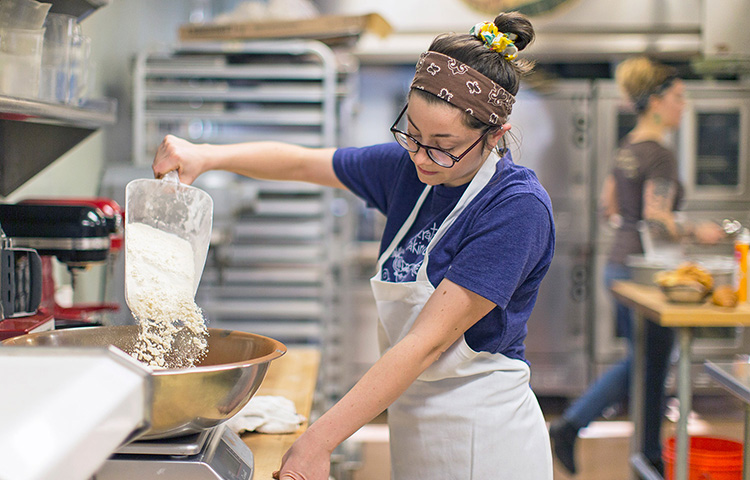
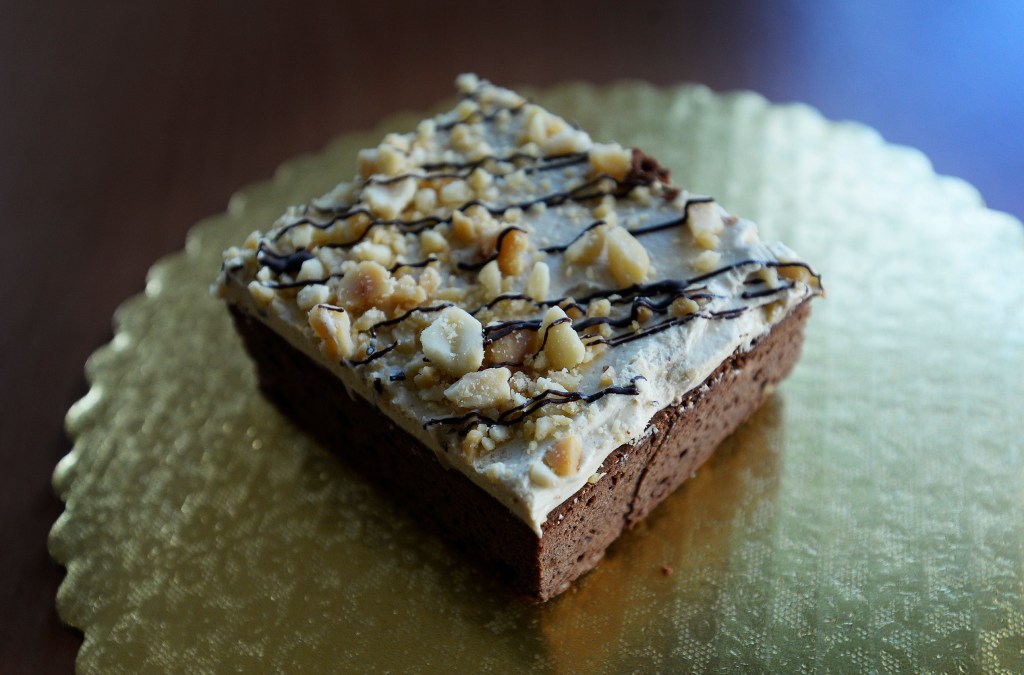
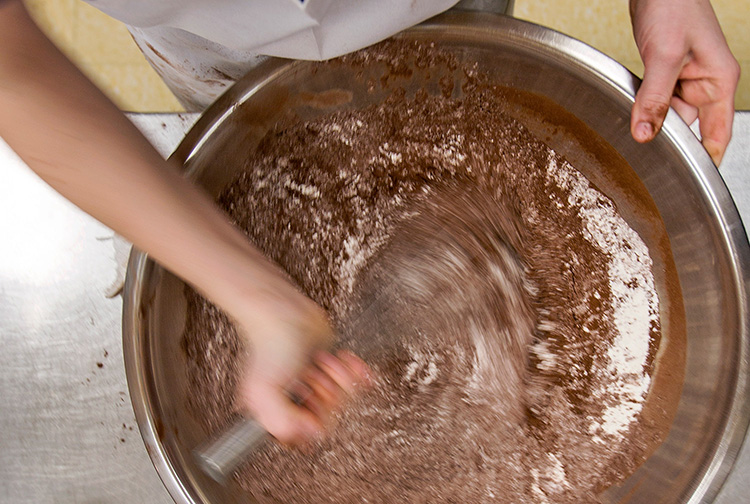
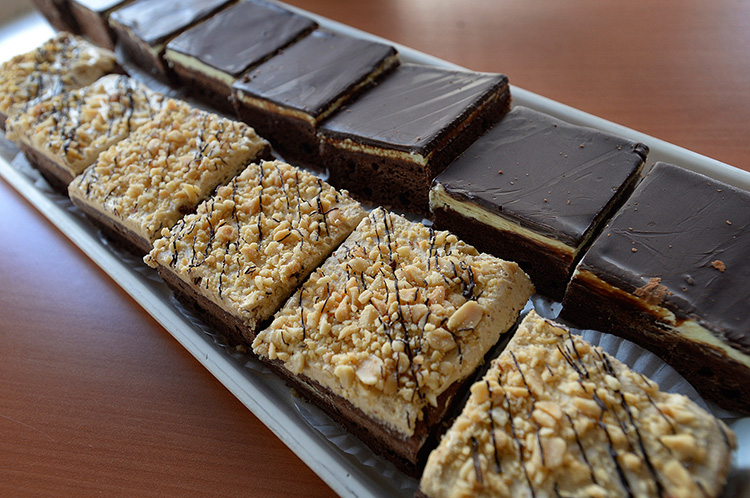
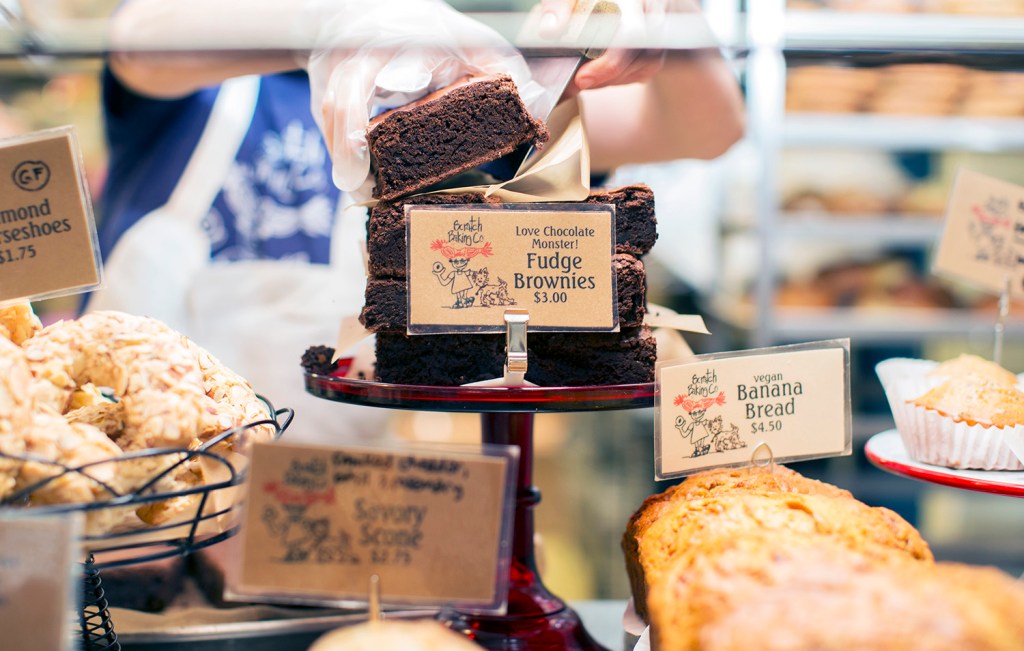


Success. Please wait for the page to reload. If the page does not reload within 5 seconds, please refresh the page.
Enter your email and password to access comments.
Hi, to comment on stories you must . This profile is in addition to your subscription and website login.
Already have a commenting profile? .
Invalid username/password.
Please check your email to confirm and complete your registration.
Only subscribers are eligible to post comments. Please subscribe or login first for digital access. Here’s why.
Use the form below to reset your password. When you've submitted your account email, we will send an email with a reset code.